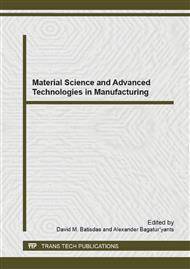p.12
p.17
p.23
p.27
p.32
p.36
p.40
p.44
p.51
Removal Polyacrylamide from Oil Recovery Wastewater by γ-Fe2O3 Magnetic Particles
Abstract:
Polyacrylamide is of concern in oil recovery wastewater treatment because of its persistence and environment effects. A concept is proposed to synthesize γ-Fe2O3 particles with magnetic functionalization for polyacrylamide removal from aqueous media. Magnetic particles were synthesized by the sol-gel method, using NH4HCO3 and FeSO4·7H2O. These magnetic particles show high adsorption capacity for polyacrylamide. Because of the useful magnetic property, large specific surface area and fast magnetic separation, the synthesized materials will provide a convenient and highly efficient means to remove polyacrylamide from oil recovery wastewater.
Info:
Periodical:
Pages:
32-35
Citation:
Online since:
January 2014
Authors:
Price:
Сopyright:
© 2014 Trans Tech Publications Ltd. All Rights Reserved
Share:
Citation:


